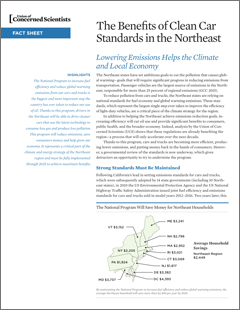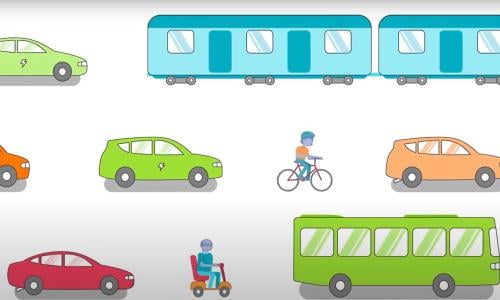State-by-state benefits
Passenger vehicles account for over 25 percent of all climate emissions in the Northeast—the largest single source in the region. That’s why, in 2010, 10 Northeast states—along with two federal agencies and four other states—jointly issued fuel efficiency and greenhouse gas standards for cars and trucks.
Initially covering vehicles sold in model years 2012-2016, and later extended to 2025, the standards represent the largest single step ever taken to improve fuel economy and cut global warming pollution. When fully implemented, the standards will nearly double the fuel efficiency of cars and trucks, save local economies billions of dollars, and cut the Northeast’s climate emissions by more than 75 million tons every year.
But the standards may be in jeopardy. In 2016, federal agencies will begin a mid-term review to reevaluate and, potentially, change or weaken the standards in response to industry pressure. UCS analysis shows that maintaining strong rules will be critical for growing Northeast economies and achieving regional climate goals.
National standards, Northeast benefits
From Boston commuters to farmers in Maine, the federal fuel economy standards have benefited drivers and households throughout the Northeast. Specifically, we estimate:
- Northeast drivers have saved $4.3 billion in fueling costs in only four years—around $171 per household.
- If the standards remain strong, the average Northeast resident will have saved nearly $5,000 by 2030
- Thanks to these net savings, maintaining the rules will create over 125,000 jobs by 2030, increasing the region’s gross domestic product by $10 billion
The standards are also linked to significant reductions in our oil consumption (1.3 billion gallons saved since 2011) and a corresponding decrease in regional greenhouse gas emissions.
Download the fact sheet for a complete overview of the benefits of the standards in the Northeast >
View here updated information for the states in the Northeast, and find out about other states>
View here why the Northeast should limit pollution from transportation >




